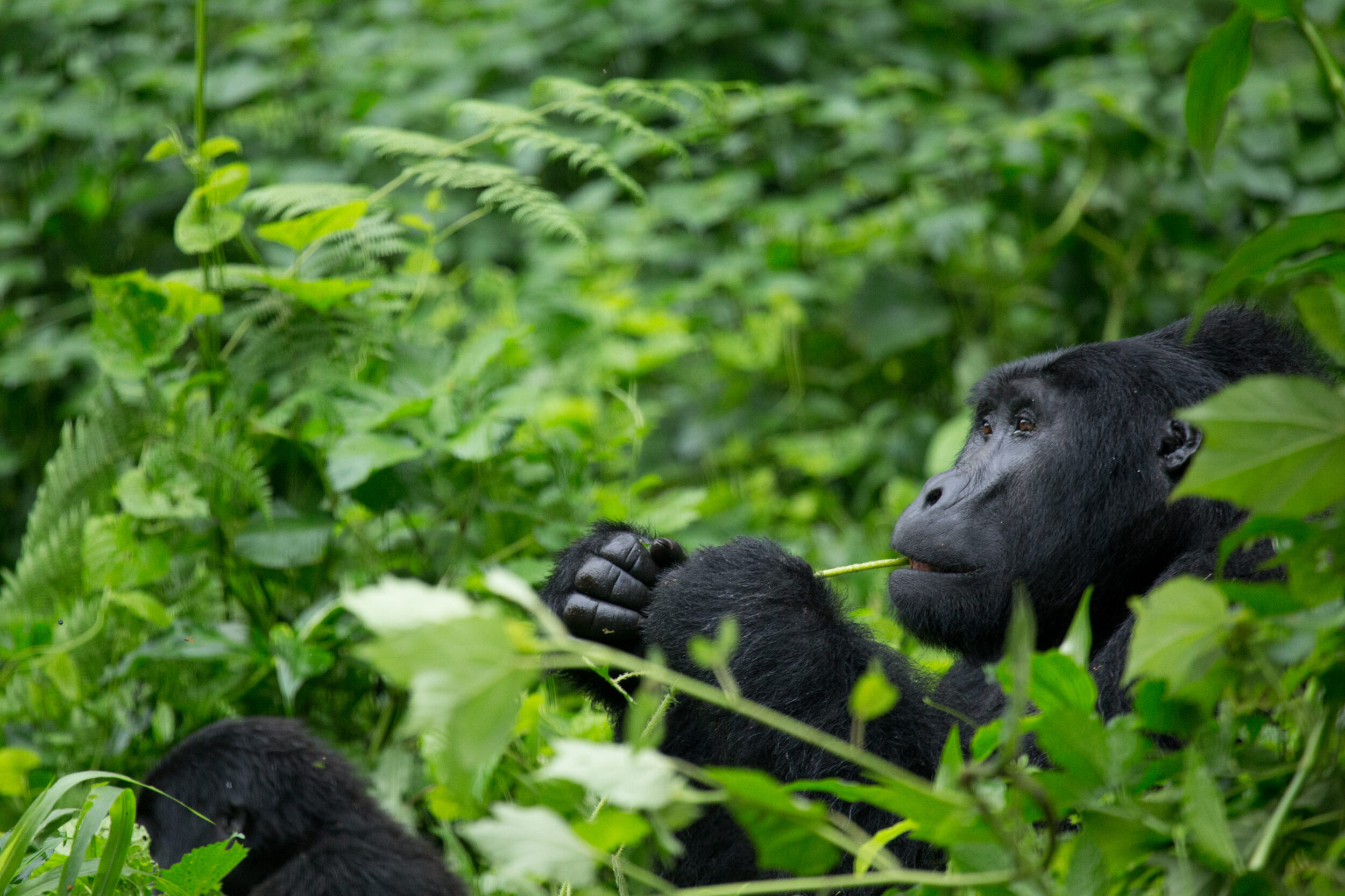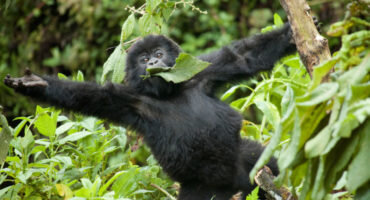
Uganda
Ready to book your trip?
Uganda was described as ‘The Pearl of Africa’ by Winston Churchill and it is easy to see why! The country is nestled between the arms of the Great Rift Valley, ecologically, where East African savannah meets West African Jungle.
The variety of habitats and environments in Uganda is remarkable; not only are there wild, open savannahs and rich, refreshing rainforests, but also shimmering freshwater crater lakes and the snow-capped peaks of the Ruwenzori Mountains, (or Mountains of the Moon as Ptolemy called them) – a challenge for the more adventurous among us!
Where else but in this enchanting country can you venture into open savannah and observe lions relaxing under an acacia tree in the morning, then in the afternoon enjoy the sight of hippos and crocs enjoying the cool waters as you cruise down the Nile? The adventure doesn’t stop there, for the very next day a journey into the lush rainforests to track chimpanzees and a guided swamp walk to see the extremely rare and endemic Shoebill stork. The highlight of the safari may be seeing one of man’s closest relatives, the mountain gorilla. Staring deep into the eyes of these endangered apes is not easily forgotten.
Safari Overview
Uganda is best known as a primate trekking destination with excellent opportunities for coming face-to-face with mountain gorillas and chimpanzees, but we find that the country’s other safari experiences are under-appreciated. As a fairly large country with a difficult terrain and lots of excellent wilderness areas, Uganda is best approached as a stand-alone destination for around 10-14 days, especially if you include the amazing and remote Kidepo National Park.
One of the things we most love about Uganda is the simple, comfy accommodations which offer a very different experience compared to Rwanda’s luxury focus.
Gorilla permits are scarce especially during peak season, and the access and logistics vary quite a bit between the gorilla family locations. Advance planning is essential to obtain the proper number of permits and plan your trip especially if you have restricted dates.
There is a wide range of routing possibilities, and safari costs can be reduced as the expense of organization, vehicle and naturalist driver/guide is shared by more people. Uganda also offers a number of unique research-based experiences where travelers can have a behind-the-scenes look at what it takes to conserve these extraordinary ecosystems and protect these great apes.
The rainy season is considered to be March through May and October and November. However, visiting Uganda during those seasons is still very enjoyable, and, as always, we design each itinerary to suit the season and potentially muddy roads.






















